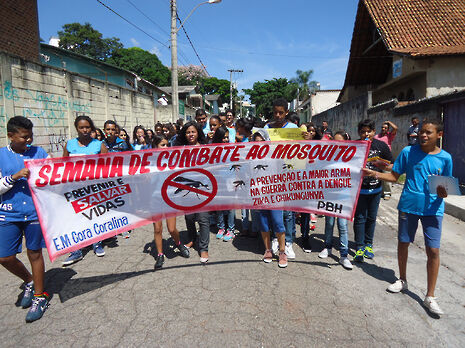With infectious disease, whose risks really count?
The Zika epidemic raised key questions over how we tackle outbreaks of disease, and from whose perspective we treat them

Early this year, Zika hit the headlines. In the aftermath of Ebola, it was feared that the Zika epidemic in South America would pan out in a similarly devastating fashion. As Rio 2016 approached, many athletes began pulling out of the Olympic Games, including the world’s number one golfer, Jason Day. But were those fears justified?
Zika is a mosquito-borne virus, carried by Aedes aegypti, mostly producing mild symptoms similar to influenza. Fears of a pandemic-like spread of Zika were due to its suggested link to microcephaly, a condition where babies are born with abnormally small heads. Some suggest the virus is toxic in early fetal brain development; others have found viral traces and Zika antibodies in the amniotic fluid of infected mothers. Yet a statistic that the media seldom report is that most women who contract Zika have healthy babies.
To evaluate accurately the risks of Zika, it is important to understand the social lives of mosquitoes. Aedes aegypti has evolved to live in the urban environment, breeding in pools of water such as those found in old tyres and plant pots. It feeds from human blood alone and – unlike malaria-carrying mosquitoes – during the day.
The favelas of Brazil – slum areas with densely-packed, poorly-built housing without running water – have become the breeding grounds for Aedes aegypti. The result has been the spread of Zika in Latin America’s poorest hotspots. As most athletes remained in the Olympic Village and didn’t visit these areas, there was minimal risk of contracting Zika.
Like many other emerging infectious diseases, Zika is a disease caused as much by social inequality as the virus itself. The most impoverished are the least likely to receive treatment and the most likely to be infected.
While millions of dollars are being pumped into generating a Zika vaccine, favela-dwellers remain poor and without access to basic sanitation and healthcare, surrounded by puddles of festering water: hubs of mosquito reproduction.
Perhaps money spent on vaccine research and development over many years could be better directed to alleviating inequality and improving livelihoods in poor neighbourhoods. Once the vaccine becomes available, it will only be available to a few, given the costs. Those lucky ones will comprise of tourists and the local elite, but not the poorest who need it most.
Epidemiologist Neil Ferguson, from Imperial College London, suggests that the “Zika spread is not containable”. It’s not all doom and gloom however. He adds: “the epidemic will burn itself out within two-three years.” This would render the vaccine useless.
Unlike in previous Zika epidemics, the rate of termination of microcephalous foetuses has been very low during the current outbreak. Nearly 65 per cent of Brazilians are Catholic, a religion that deeply opposes abortion, and the medical procedure is illegal, with few exceptions.
Despite this, rich Brazilians have always been able to get access to abortions, irrespective of legality. But poor women are much more vulnerable, with no access to safe abortion. Women most likely to get Zika are therefore the least likely to get treatment before birth, and the least likely to receive the kind of specialist help that the elite can afford.
Addressing social inequality, improving livelihoods and urban environments, and promoting women’s rights and access to healthcare for the poor is thus crucial to controlling Zika. Wider responses are probably more significant in the long term than the more traditional control efforts being implemented, or the search for a vaccine.
Framing the disease risk narrative around those who are most affected, such as the favela-dwellers of Rio, and not wealthy Olympians or tourists, will ensure a better allocation of resources in future epidemics
 News / Pembroke to convert listed office building into accom9 December 2025
News / Pembroke to convert listed office building into accom9 December 2025 News / Gov declares £31m bus investment for Cambridge8 December 2025
News / Gov declares £31m bus investment for Cambridge8 December 2025 Features / Searching for community in queer Cambridge10 December 2025
Features / Searching for community in queer Cambridge10 December 2025 News / Uni redundancy consultation ‘falls short of legal duties’, unions say6 December 2025
News / Uni redundancy consultation ‘falls short of legal duties’, unions say6 December 2025 Lifestyle / Into the groove, out of the club9 December 2025
Lifestyle / Into the groove, out of the club9 December 2025









